Amateur Radio Call Signs
Imagine that after a weekend foundation licence course at your local radio club, you pass the multi-choice test and you now have an Amateur Radio Operator’s Certificate of Proficiency, an Amateur Radio Licence and your own call sign. You can’t wait to get on-the-air with your new rig and a home-made shortwave antenna. You tune around the band; hear some stations on and give them each a call. Everyone is pleased to log a contact with a new operator. They ask about your rig, your antenna and they all say they can’t believe how young you are. You record all the details of your first contact in your log book. Then next week you get a QSL card in the mail from someone you talked to in Russia! There is a picture of a farm house with some antennas. You wonder what other countries you can get with your rig, which transmits less power than the light globe in your fridge!
Introduction
All amateur radio operators, some club and special event stations have distinctive call signs so that they can be easily identified. Call signs work like car licence plates. It is a legal requirement to identify yourself on the air using your call sign. Call signs use prefixes, numbers and suffixes to identify the country and region of origin, the current operating mode and finally the amateur radio operator including their licence class.
Prefixes
The first part of a call sign is called a prefix. Prefixes comprise one or two letters, which may be preceded by a single digit. The prefix identifies the county of origin. Some countries have a number of different prefixes allocated to different licence classes.
Numbers
After the prefix there is a number, 0 - 9, which usually identifies a region within the country of origin.
Suffixes
After the region number there are one or more letters to identify the specific operator or station.
Operating Modes
An amateur radio station may be operated from a fixed home address or from a portable or mobile situation. When a station is operated in a different country or region, an additional prefix or suffix identifying the new country and region may be added. These additional prefixes or suffixes are separated by a forward slash "/". When a station is operated in Portable, Mobile, Maritime Mobile or Aeronautical Mobile situation the suffix P, M, MM or AM is added after a slash.
Licence Classes
In some countries there are different amateur radio licences classes, which permit the individual operator using certain bands, power levels or modes etc. In which case different call sign prefixes or suffixes are used to identify the operator's licence class. Different licence classes are sometimes called: Extra, Advanced, General, Technical, Novice or Foundation.
Prefix Map
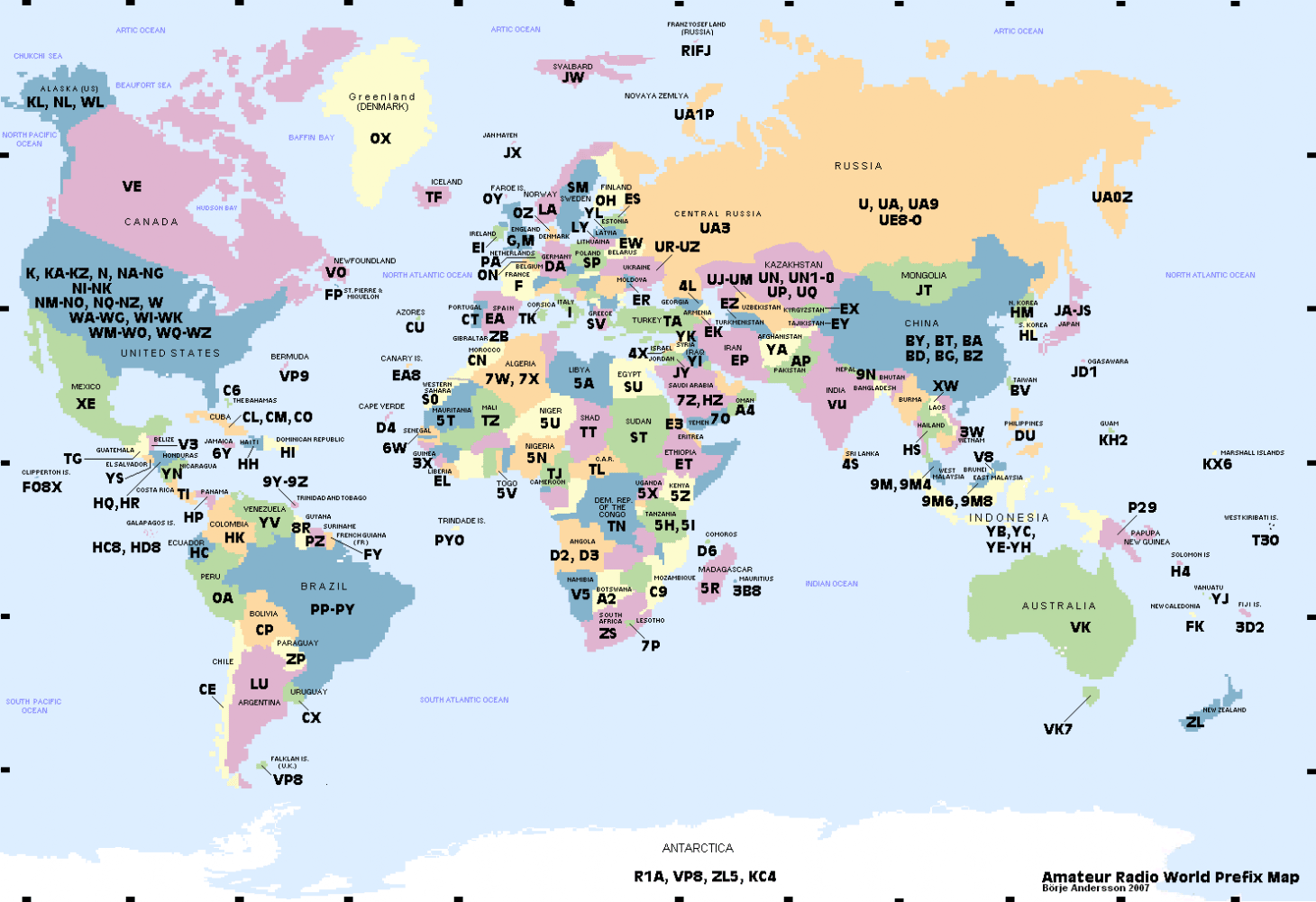
Example
Let's take a look at this call sign: VK3FOWL. The prefix is VK; it is an Australian call sign. The number is 3; that is allocated to stations in the state of Victoria. The suffix is FOWL; this comprises the licence class (F for foundation) and letters to identfy the operator (OWL for Julie, because she likes owls).

QSL Cards
A QSL card is a postcard of sorts which is sent via the mail to confirm an on-air contact between two operators. Many have a colourful picture on the front, usually of the operator or the station, but sometimes of the region or a related theme. However, the most prominent part of a QSL card is the operator's call sign. Additional information about contact is provided in areas designed for that purpose, usually on the back of the card.
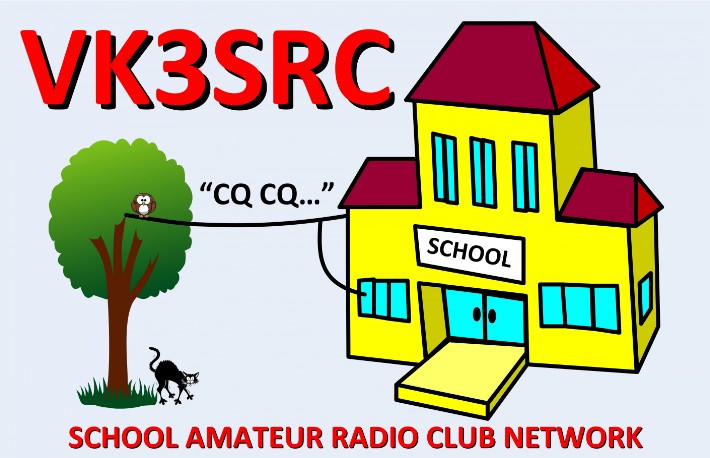
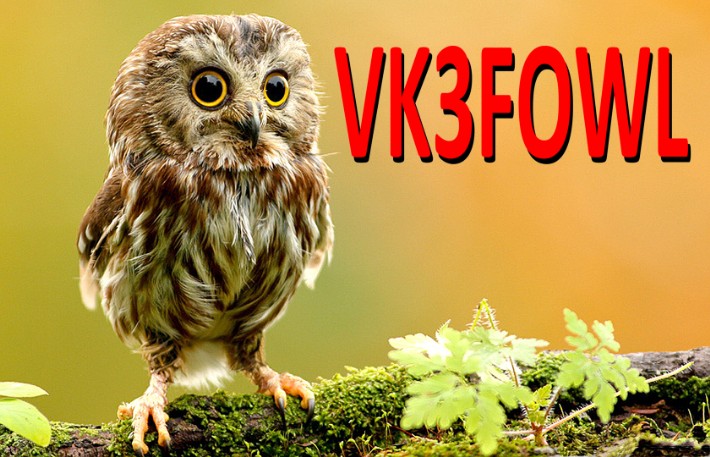
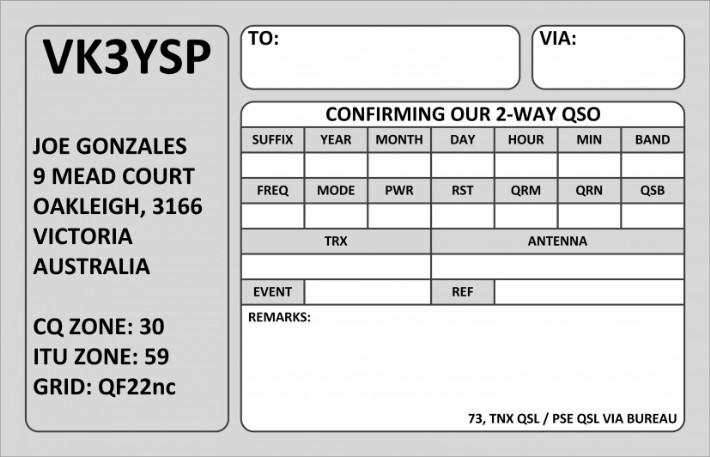
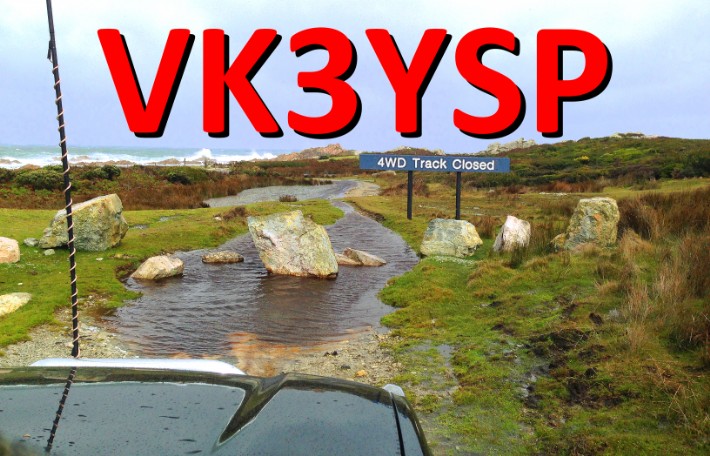
Preparation
- You will need to have a meeting table with namecard for each student. The folded cards display an individual (fictitious) call sign on both sides.
- You will need to tune around an active amateur band looking for DX call signs.
- You will need to have some printed QSL cards and one plain white QSL card (100mm x 65mm) for each student; Details of your SARC station (call sign, CQ zone, ITU zone, Grid). Colouring pens and/or colour image printing facilities.
Activity
- Round table call sign practice: Students sit around a meeting table with individual call sign name-cards. They take it in turns to call the student opposite, who returns the call. E.g.: "Calling VK3FOWL, this is VK3YSP". "VK3YSP, this is VK3FOWL returning"
- Receive-only call sign practice: Students listen to DX traffic. They write down the call signs heard and look each one up on www.qrz.com.
- On-air call sign practice: Students take it in turns to call a participating station using the SARC callsign.
- Create your own SARC QSL card: Students review some printed QSL cards. The different parts of the QSL are explained. Students use colouring pens or graphic design applications to start creating their own QSL cards, each featuring the operator's name, their own name and the SARC call sign.
Homework
- Students finish their QSL cards for next session.
- Students look up their name-card call sign on www.qrz.com and report on the operator and the station.

